business resources
Gamification in Lead Capture: How to Make Popups Fun (and Effective)
2 Jul 2025, 6:45 pm GMT+1
Let’s be honest: most popups are either ignored or closed in a millisecond. And not because users hate popups, they hate boring ones.
When every other website throws a “Subscribe and get 10% off” in your face, it’s no surprise conversion rates flatten out. Users are immune to generic tactics. If you want their attention and their email, you’ll have to earn it.
That is where gamification steps in. It's about creating a moment of engagement that comes across as less salesy sleight and more micro-moment. One that encourages curiosity, tapping emotion, and makes lead capture a part of the experience rather than an impediment.
In this article, we’ll explore how to turn your popups into playful touchpoints without sacrificing performance or your brand’s credibility.
What Is Gamification in Lead Capture?
Gamification in lead capture means turning your popup into a mini-game instead of a mini-annoyance. It swaps “Give us your email” with “Wanna try your luck?” and that subtle shift changes everything.
Think of spin-the-wheel discounts, scratch-to-reveal deals, quizzes with a prize at the end, or mystery boxes. These are built on human psychology. We’re wired to enjoy challenges, surprises, and the feeling of maybe I’ll win something. Even a 10% discount feels better when you earn it.
Tools like Claspo — a popup builder with ready-to-use gamified templates — make it easy to add these elements without coding or design hassle. You can choose the format, set the reward, and launch in minutes.
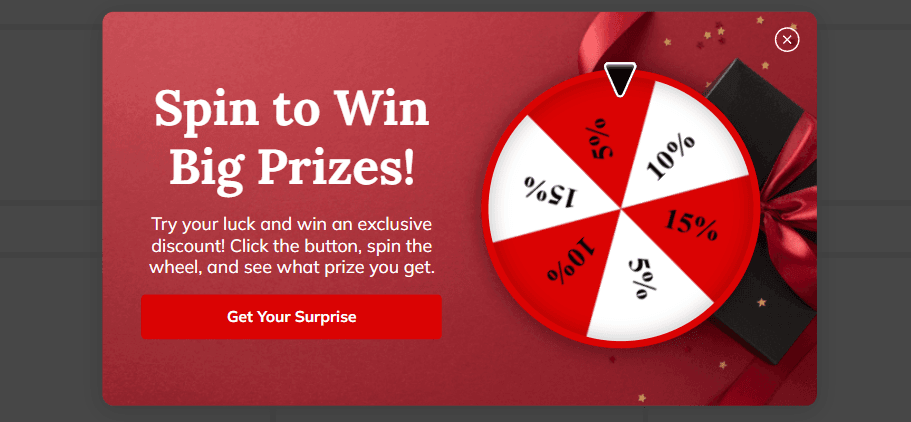
This works because gamified popups introduce micro-interactions — small, low-effort actions that offer instant feedback. They activate the dopamine loop: we click, we see movement, we anticipate a result. That’s the same mechanism behind why people play games or check notifications.
From a UX perspective, it’s not about being flashy. It’s about offering something to do, not just something to read. That creates a moment of engagement and those moments are rare and valuable in the attention economy.
In interactive marketing, gamification bridges the gap between content and conversion. When done right, it doesn't feel so much like data collection as it feels like rewarding participation. And that’s why users respond.
Why Gamified Popups Work
Gamified popups give users a reason to interact, not just comply. Instead of asking for attention, they earn it.
Here’s what actually happens when you add gamification to your popups:
- Engagement time goes up — users pause, explore, and click instead of closing the popup on instinct.
- Conversion rates increase — gamified formats like spin-to-win or quizzes outperform static popups by encouraging interaction and offering an immediate reward.
- Bounce rates drop — even a quick game can break the scroll-exit-scroll cycle.
What’s behind this shift? A mix of emotion and behavioral design. Gamification stir curiosity, unleash reward circuitcs (even small wins feel good), and give the user a sense of control. That combination of expectation, effort, and reward turns a passive browser into an active player, and active players are far more likely to convert.
Types of Gamified Popups That Convert
Gamified popups work best when they feel simple, intuitive, and rewarding. Here are five formats that consistently drive results.
1. Spin-to-Win
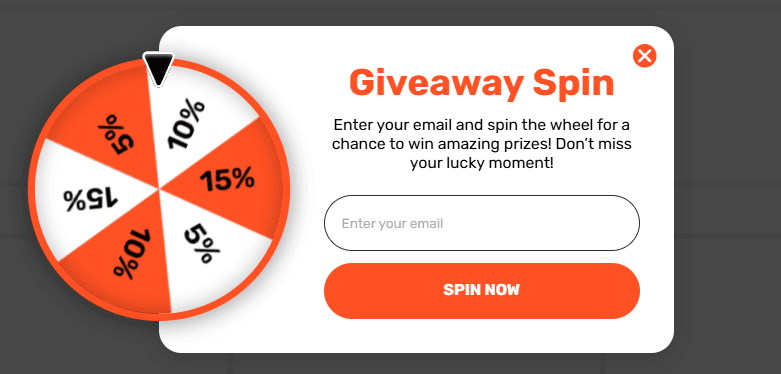
A virtual prize wheel on a site where the user spins to uncover a reward, typically a discount or bonus.
Best for: Ideal for eCommerce websites (e.g., with 5%, 10% offers, free shipping).
Why it works: The spinning builds suspense. Even if the “prize” is small, it feels earned, not handed out.
2. Quizzes
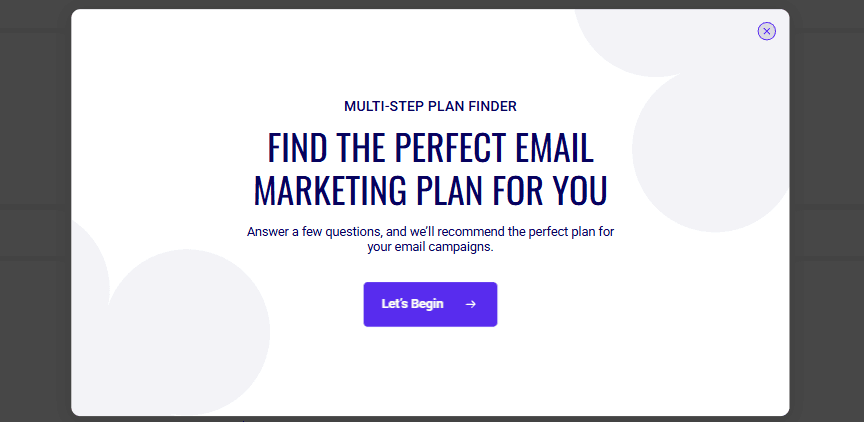
Short, multi-step questions leading to a tailored result, plus an opt-in at the end.
Best for: Brands that want to segment their audience (e.g., skincare, fitness, SaaS).
Why it works: People love getting personalized results. Bonus: you collect high-intent leads with useful data attached.
3. Scratch Cards
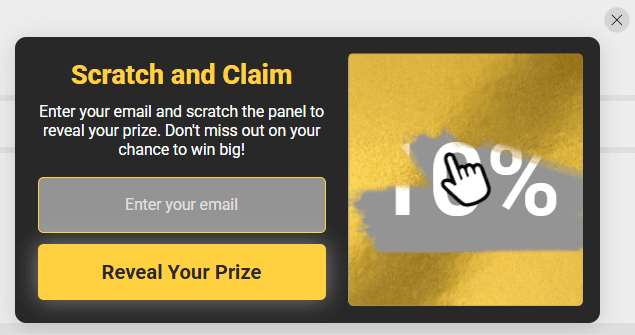
An interactive card users “scratch” to uncover a hidden reward.
Best for: Flash sales, special events, or seasonal campaigns.
Why it works: It taps into curiosity. Users feel like they’re unlocking something exclusive even if the offer is standard.
4. Progress Bars and Micro-Challenges
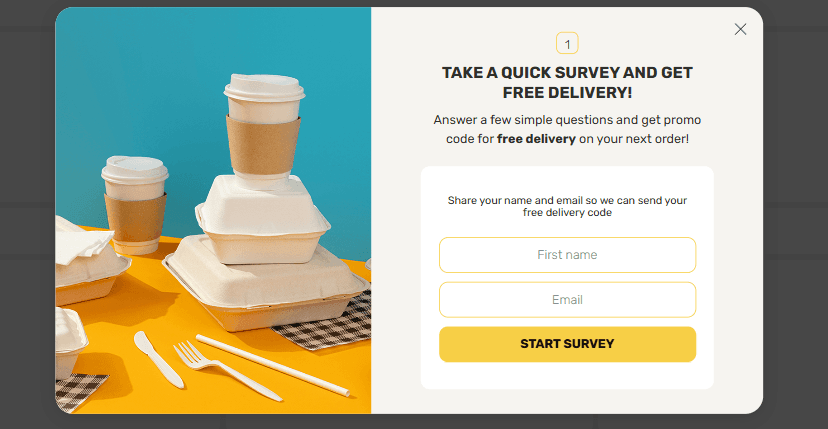
Popups that show progress (e.g., “Step 1 of 3”) or mini-tasks (e.g., answer two questions to get 20% off).
Best for: Multi-step lead forms, upsells, or educational funnels.
Why it works: Progress motivates completion. Once someone starts, they’re more likely to finish. It also makes longer forms feel lighter.
5. Surprise Boxes

Users click a sealed box or envelope to “reveal” their deal.
Best for: Driving urgency during promos or product launches.
Why it works: It’s the digital version of a gift and users can’t resist opening it. Adds a layer of fun with very little setup.
How to Design a High-Performing Gamified Popup
Gamified popups only work if they’re easy to use and worth the click. Here’s what separates high-performers from the ones people ignore.
1. Keep It Intuitive. Users should know what to do at first sight. If it takes more than two seconds to understand, it’s too complicated. No instructions, no guessing — just tap, play, win.
2. Make the Reward Obvious. Tell users exactly what they might get: 10% off, free shipping, early access. The clearer the prize, the higher the motivation to engage.
3. Stay On-Brand. Gamification doesn’t mean cartoon confetti and arcade sounds, unless that fits your voice. The format should support your tone, not undermine it.
4. Design for Mobile First. Many users will see your popup on a smartphone. Make sure buttons are thumb-friendly, popup text is readable, and animations don’t lag. Test it on real screens, not just the desktop preview.
5. Clarify What Happens Next. The CTA should do more than say “Submit.” Be clear: Get My Discount, Reveal My Result, Send My Freebie. And make sure the transition (to checkout, email, etc.) is smooth.
Want more inspiration? Check out this detailed email pop-up guide with real examples and use cases that convert at this link.
Share this
Contributor
Staff
The team of expert contributors at Businessabc brings together a diverse range of insights and knowledge from various industries, including 4IR technologies like Artificial Intelligence, Digital Twin, Spatial Computing, Smart Cities, and from various aspects of businesses like policy, governance, cybersecurity, and innovation. Committed to delivering high-quality content, our contributors provide in-depth analysis, thought leadership, and the latest trends to keep our readers informed and ahead of the curve. Whether it's business strategy, technology, or market trends, the Businessabc Contributor team is dedicated to offering valuable perspectives that empower professionals and entrepreneurs alike.
previous
How to Give the Right Prompts to Get Better Logo Results with AI
next
Top Data Warehouse Services Providers for Enterprises